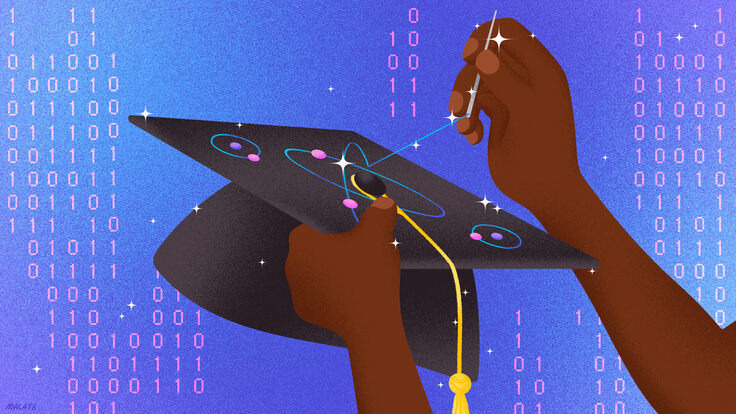Quantum Diaries first published this story on July 6, 2011.
Two weeks ago, my Aunt and Grand mom (G-Mom) came from New Jersey to visit me at Fermilab. The first thing they wanted to see was the house in Fermilab Village where my bride-to-be and I would be living for the rest of my graduate career. G-Mom was impressed: “They hung pictures on the walls for you!”
Then it got complicated. G-Mom asked me what I do.
”I do nuclear physics with the MINERvA, a neutrino interactions experiment. This detector has an array of nuclear targets that vary in size. By looking at events that occur in nuclei of different size, we can discover things about those nuclei.” (See notation ** below)
Her follow-up question was: “How is it you find that interesting?”
I told her that what we do in nuclear/particle physics is try to solve mysteries and puzzles, and I like doing that. Being an avid reader of mystery novels and voracious solver of cross-word puzzles, G-Mom was on-board with this reasoning. So, I tried to explain the mysteries of nuclear physics that MINERvA will investigate in the style of a Sam Spade or Philip Marlowe private detective novel…
“MINERvA, Intra-Nuclear Detective”
MINERvA was starting to lose her cool. Of all the detectors in all the world, this proton walked into her’s.
After 23 hours of interrogating this proton about what he was doing at the time of the boson exchange, he wasn’t revealing sign one. The detector had picked up the proton in the vicinity of the incident. His usual accomplice, the muon, was seen fleeing north, where he was apprehended by MINOS, the adjacent detector. Even with the proton refusing to talk, the greenest rookie could spot a muon and a proton in the final state and tell you this was a case of charged-current quasi-elastic neutrino scattering.
It happens all the time at these energies. A neutrino with a few GeV of kinetic energy flies deep into some back-alley nucleus and meets up with a neutron. The deal goes down quickly: a W+ is exchanged; the neutron, fed its fix of charge, is now a proton; the neutrino flies away as a muon, thanked for its troubles with a charge of his own. This is textbook quasi-elastic scattering.
But this was not a textbook case. MINERvA had in her custody not one, but two protons! Only after she drained the last drop of espresso would MINERvA allow her weary legs to drag her back to the interrogation room. The questioning was fast and direct.
“Listen Proton, we know you and the muon came out of a carbon nucleus. Was it quasi-elastic scattering?”
“Sure, but it wasn’t me. It was the other proton.”
“The other proton told us the same thing. Then what were you doing fleeing the nucleus?”
“I already told you: I watched the neutrino come in and scatter off a neutron. Guy turns into a proton and runs right into me!”
“That’s what they all say. We think both of you protons were directly involved in the scattering.”
“Oh, yeah? How are you going to prove it? You don’t have jurisdiction inside the nucleus!
The proton was right. Experiments are not able to see inside the nucleus. It could not be proven that the protons were involved directly in the neutrino interaction.
But MINERvA was getting close to connecting the dots enough to figure out what this gang of particles was doing inside the nucleus. They couldn’t hide forever. Soon MINERvA would unravel their pattern and tell all the detectors in the world what was going on.
** When an interaction happens inside of a large nucleus, the particles involved in the neutrino interaction (“primary particles”) must travel through a sea of protons and neutrons to get outside the nucleus, where they can be detected. Primary particles may interact with the other protons and neutrons on their way out. For example, a primary proton can knock out another proton from the nucleus. Then the experiment will observe two protons coming out of the nucleus (“final state particles”). The messiness of primary particles interacting on their way out of the nucleus is called Final State Interactions (FSI). MINERvA will measure FSI in its wide range of nuclei, thus revealing clues about the mysterious inner-workings of the nucleus.







